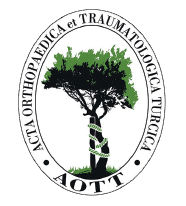Objective: The structure and function of the Metatarsal Transverse Arch (MTA) remain underexplored. It was hypothesized that, during the push-off phase of gait, the MTA does not form a single arch between the first and fifth metatarsals; rather, it consists of 2 separate arches—one spanning the first to the third metatarsals and the other spanning the third to the fifth metatarsals—that function like the hulls of a trimaran boat. This study aims to investigate the biomechanical role of the MTA during this critical phase.
Methods: Dynamic pedobarographic measurements were utilized from 1250 adults (847 females, 403 males). Maximum pressures on all metatarsal heads during the push-off phase were recorded, and MTA arches were calculated using the SAP2000 program. Statistical significance was set at P < .05.
Results: The mean pressure on the third metatarsal was 160.0 (minimum: 9.0, maximum: 1799.0) for the left foot and 142.0 (minimum: 0.0, maximum: 1753.0) for the right foot. The maximum pressure in both feet occurred at the third metatarsal head (left: 67.0%, right: 54.6%). There was no statistically significant difference between genders regarding the maximum load on the metatarsal heads.
Conclusion: This study reinterprets the biomechanical behavior of the forefoot and MTA during the push-off phase, potentially aiding in the understanding of forefoot pathologies. Future research on children and adolescents could further illuminate forefoot biomechanics.
Level of Evidence: Level III
Cite this article as: Bayraktar D, Ozyalcin A, Ozyalcin MH. A new perspective on forefoot biomechanics: the dual arch structure of the metatarsal transverse arch and the trimaran effect. Acta Orthop Traumatol Turc., 2025;59(3):164-169.



.png)
.png)
